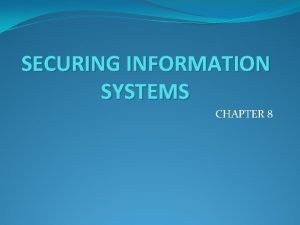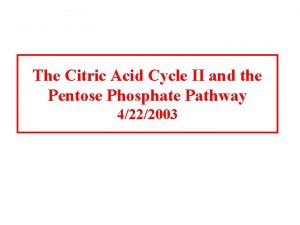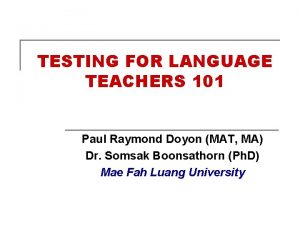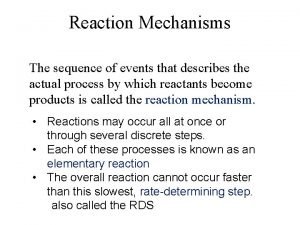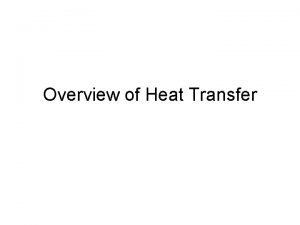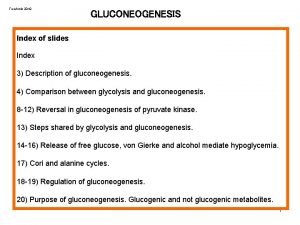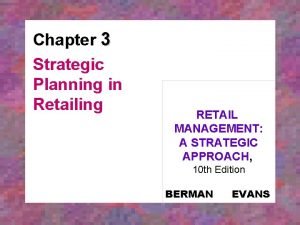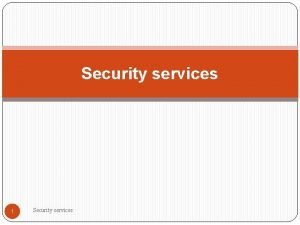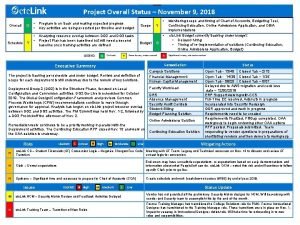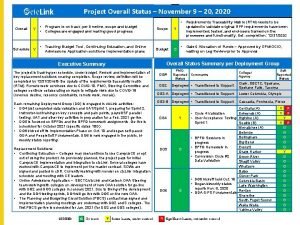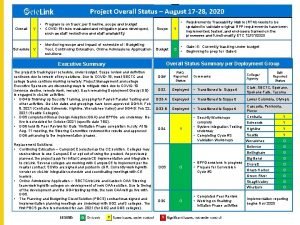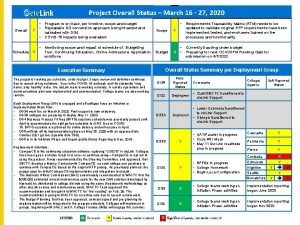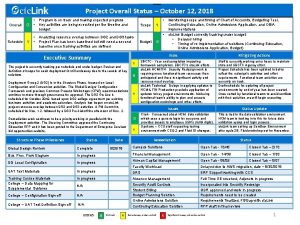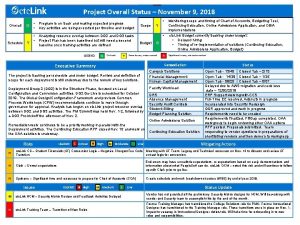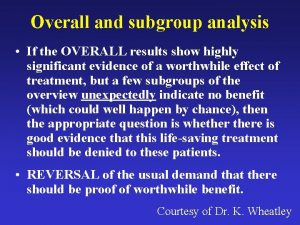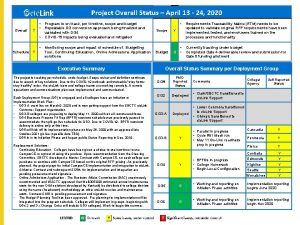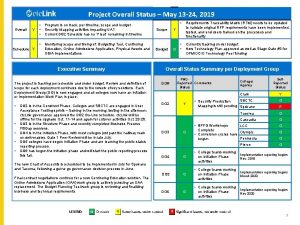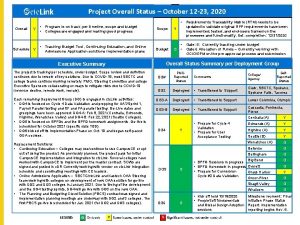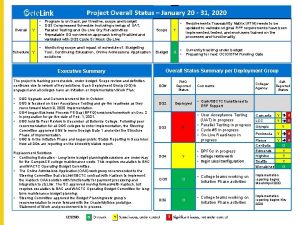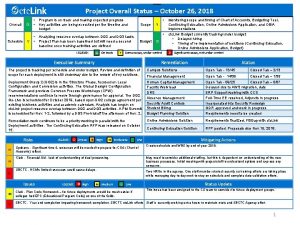Overall Role of Security Systems Security Services Copyright


























- Slides: 26

Overall Role of Security Systems Security Services

Copyright © Texas Education Agency, 2017. These Materials are copyrighted © and trademarked ™ as the property of the Texas Education Agency (TEA) and may not be reproduced without the express written permission of TEA, except under the following conditions: 1) Texas public school districts, charter schools, and Education Service Centers may reproduce and use copies of the Materials and Related Materials for the districts’ and schools’ educational use without obtaining permission from TEA. 2) Residents of the state of Texas may reproduce and use copies of the Materials and Related Materials for individual personal use only, without obtaining written permission of TEA. 3) Any portion reproduced must be reproduced in its entirety and remain unedited, unaltered and unchanged in any way. 4) No monetary charge can be made for the reproduced materials or any document containing them; however, a reasonable charge to cover only the cost of reproduction and distribution may be charged. Private entities or persons located in Texas that are not Texas public school districts, Texas Education Service Centers, or Texas charter schools or any entity, whether public or private, educational or non-educational, located outside the state of Texas MUST obtain written approval from TEA and will be required to enter into a license agreement that may involve the payment of a licensing fee or a royalty. For information contact: Office of Copyrights, Trademarks, License Agreements, and Royalties, Texas Education Agency, 1701 N. Congress Ave. , Austin, TX 78701 -1494; phone 512 -463 -7004; email: copyrights@tea. state. tx. us. Copyright © Texas Education Agency, 2017. All rights reserved. 2

Risk Analysis > The overall role of security management that includes identifying potential areas of loss and developing/instilling appropriate security countermeasures > One part of this process is the security survey, which is used to identify potential problem areas Copyright © Texas Education Agency, 2017. All rights reserved. 3

Risk Analysis > Security services methodologies include • One-Dimensional Security – relies on a single deterring factor (i. e. guards) • Piecemeal Security – security systems that have individual pieces added to the loss prevention function as the need arises without a comprehensive plan • Reactive Security – security systems that respond only to specific events of loss • Packaged Security – standard security systems (equipment, personnel, or both) without a connection to any specific threats and with the assumption that packaged systems will take care of all problems Copyright © Texas Education Agency, 2017. All rights reserved. 4

Risk Analysis > There is a range of needs in security services • A small business with minimal loss potential or relative ease of defense might adequately be served by one-dimensional security (i. e. a good lock on the door and an alarm system, or a contract guard patrol) • As risks increase and become more complex, the effectiveness of the onedimensional approach decreases, and a more comprehensive security program becomes necessary > Security must be based on the analysis of the total risk potential > In order to set up defenses against losses from crime, accidents, or natural disasters, there must first be a means of identification of the risks Copyright © Texas Education Agency, 2017. All rights reserved. 5

Risk Management techniques that identify, analyze, and assess risks/threats; if a risk/threat is detected, methods are employed to manage it > Requires procedures and research to help businesses avoid taking security risks > Allows risk to be handled in a logical manner by using long-held management principles Copyright © Texas Education Agency, 2017. All rights reserved. 6

Risk Management > Begins with threat assessment (identifying vulnerabilities) • Many threats to businesses are important to security • Specific threats are not always obvious • The key is to consider the specific vulnerabilities in a given situation > Characteristics of a good security manager are • Awareness of all possible risks • The ability to assess the system and policies from the perspective of a criminal in order to accurately reduce the vulnerability of company property > A thorough threat assessment is comprehensive and accurate, and leads to effective countermeasures Copyright © Texas Education Agency, 2017. All rights reserved. 7

Risk Management > Begins with threat assessment (identifying vulnerabilities) > After a threat assessment is complete, a vulnerability analysis (aka a security survey or an audit) should be repeated on a regular basis • Threats to information systems are divided into three categories • Natural Threats • Intentional Threats • Unintentional Threats > No system can be truly safe from all threats, but knowing the risks and methods for prevention increases the chance of protection Copyright © Texas Education Agency, 2017. All rights reserved. 8

Risk Management > Includes two alternative solutions, which should be complementary • Investment in loss-prevention techniques • Insurance/Insurance companies • Cannot meet the security challenges faced by major corporations alone • Have found loss-prevention techniques and programs invaluable Copyright © Texas Education Agency, 2017. All rights reserved. 9

Risk Management (continued) > Requires a good risk-management program that involves four basic steps • Identification of risks or specific vulnerabilities • Analysis and study of the risks/vulnerabilities • Optimization of risk management alternatives (see Section X) • • • Risk Avoidance Risk Reduction Risk Spreading Risk Transfer Self-assumption of risk • Ongoing study of security programs Copyright © Texas Education Agency, 2017. All rights reserved. 10

Security Survey > An exhaustive physical examination of the premises and a thorough inspection of all operational systems and procedures • • To analyze a facility to determine the existing state of its security To locate weaknesses in its defenses To determine the degree of protection required To lead to recommendations for establishing a total security program > Requires an examination of the procedures and routines in regular operation > Requires an inspection of the physical plant and its environment Copyright © Texas Education Agency, 2017. All rights reserved. 11

Security Survey > Can be conducted by • Staff security personnel currently employed by the company • Qualified security specialists employed from outside of the company for this specific purpose • Some experts suggest that outside security personnel can provide a more complete appraisal because they are more objective and less likely to be blinded by routine > Should be completed by persons who • Have training in the field • Have achieved a high level of ability • Are totally familiar with the facility and its operations Copyright © Texas Education Agency, 2017. All rights reserved. 12

Security Survey Includes a checklist created by the survey team in preparation for the actual inspection > Serves as a guide for the areas that must be examined > Includes locations and departments to be surveyed including • Physical location • Personnel department • Accounting department • Data processing department • Purchasing department • Shipping and receiving department Copyright © Texas Education Agency, 2017. All rights reserved. 13

Report of the Survey > After the survey is complete a report should be written indicating the areas that have weak security and recommending solutions > After the report is complete, a security plan may be created using it as a resource > The plan must be revised to find the best approach for achieving acceptable security standards within the indicated limitations; compromise will be necessary in some cases Copyright © Texas Education Agency, 2017. All rights reserved. 14

Report of the Survey > When security directors do not receive their requests, they must work within the framework as best they can > When security directors are denied extra personnel, they must find hardware that will compensate > Security directors must exhaust every alternative method of coverage before going to management with an opinion that requires this kind of decision Copyright © Texas Education Agency, 2017. All rights reserved. 15

Operational Audits & Programmed Supervision An operational audit (OA) > Considers all aspects of the security operation on a continuing basis > A methodical examination, or audit, of operations > Threefold purpose • To find deviations from established security standards and practices • To find loopholes in security controls • To consider means of improving the efficiency or control of the operation without reducing security • Relatively inexpensive and builds on the security survey Copyright © Texas Education Agency, 2017. All rights reserved. 16

Operational Audits & Programmed Supervision An operational audit (OA) > Based on the concept of programmed supervision without which the audit would become nothing more than a simple security survey • Programmed Supervision (PS) – making sure that a supervisor or other employees go through a prescribed series of inspections that will determine whether the functions or procedures for which they are responsible are being properly executed (Fischer and Green, 1998) > Conducted by supervisors who are evaluating their areas of responsibility on an ongoing basis > Differs from a security survey which begins by developing a checklist of items that the security team believes are important Copyright © Texas Education Agency, 2017. All rights reserved. 17

Operational Audits & Programmed Supervision An operational audit (OA) > Conducted regularly and frequently, and once the OA begins, it continues until someone in a position of authority decides that it is no longer necessary > Requires supervisors to report physical conditions regularly, as opposed to the security survey which relies heavily on either the proprietary security force or a contractor > Uses the management resources of the company > The security manager can develop a comprehensive security plan using the information gained from vulnerability analysis, security surveys, and OAs Copyright © Texas Education Agency, 2017. All rights reserved. 18

Probability > The chance that something will happen; typically involves the use of mathematics > After vulnerabilities are identified by the security survey or the OA, it is essential to determine the probability of loss, even though probability is subjective > Then decisions must be made based on • • How quickly a problem needs to be addressed Data, such as the physical aspects of the vulnerability being assessed Procedural considerations History of the industry’s vulnerabilities Copyright © Texas Education Agency, 2017. All rights reserved. 19

Criticality > A term used to help separate vulnerabilities into smaller, specific categories; also means the impact of a loss as measured in dollars > Determines how important the area, practice, or issue is to the existence of the organization • The expense of security services must be greater than the potential loss of money for a viable cost-benefit analysis Copyright © Texas Education Agency, 2017. All rights reserved. 20

Criticality (continued) > Measures the impact of dollar loss, which includes • • Cost of the item lost Replacement cost Temporary replacement Downtime Discounted cash Insurance rate changes Loss of marketplace advantage Copyright © Texas Education Agency, 2017. All rights reserved. 21

Probability/Criticality/Vulnerability Matrix > Criticality, like probability, is a subjective measure, but it can be placed on a continuum > By using the ranking generated for probability and criticality, and by devising a matrix system for the various vulnerabilities, it is possible to quantify security risks and determine which vulnerabilities merit immediate attention > Although some areas of importance may be obvious, some security executives may be surprised to find that other areas are more critical than they first surmised Copyright © Texas Education Agency, 2017. All rights reserved. 22

Probability/Criticality/Vulnerability Matrix > By considering the history of loss and the number and quality of security devices present, it is possible to estimate the probability of a cash theft > Criticality should take precedence over probability > The security director should implement measures to reduce threat to the improbable level whenever the measures are cost-effective Copyright © Texas Education Agency, 2017. All rights reserved. 23

Alternatives for Optimizing Risk Management > It is unlikely that any evaluation can absolutely determine the cost effectiveness of any security operation > A low crime rate can indicate that the security department is performing effectively > Security services can also be considered insurance against unacceptable risks > Effective security services must be adaptable, changing regularly to accommodate changing circumstances in a given facility Copyright © Texas Education Agency, 2017. All rights reserved. 24

Alternatives for Optimizing Risk Management > Compiling pertinent information is a useful tool for keeping security services current and effective • The survey and the report provide a valuable evaluation that shows a detailed and current profile of the firm’s regular activities • Texts, periodicals, official papers, and articles in the general press related to security matters especially those with local significance • May have immediate importance • May eventually reveal and predict risk patterns (i. e. seasonal shifts, economic trends) • Litigation, particularly with issues about no or inefficient security Copyright © Texas Education Agency, 2017. All rights reserved. 25

Resources > 012382012 X, Effective Security Management, Charles A. Sennewald, Security World Publishing, 2011 > 0205592406, Introduction to Private Security: Theory Meets Practice, Cliff Roberson and Michael L. Birzer, Prentice Hall, 2009 > 0750684321, Introduction to Security, Robert J. Fischer and Gion Green, Butterworth. Heinemann, 2008 > Threats to Security: In Information Assurance and Security, Purdue University, The Center of Educational Research > Investigator/Officer’s Personal Experience Copyright © Texas Education Agency, 2017. All rights reserved. 26
 Securing information systems summary
Securing information systems summary Private secuirty
Private secuirty C# azure worker role example
C# azure worker role example Ambiguitätstoleranz krappmann
Ambiguitätstoleranz krappmann Statuses and their related roles determine the structure
Statuses and their related roles determine the structure Lesson 3 the role of government in economic systems
Lesson 3 the role of government in economic systems Integrated and differentiated services in computer networks
Integrated and differentiated services in computer networks Wake county human services community services center
Wake county human services community services center Word equation for photosynthesis
Word equation for photosynthesis Limitations of study examples
Limitations of study examples Citric acid cycle overall reaction
Citric acid cycle overall reaction Testing overall ability
Testing overall ability At the instant shown the length of the boom ab
At the instant shown the length of the boom ab What is the theme of romeo and juliet
What is the theme of romeo and juliet Overall rate law of a reaction
Overall rate law of a reaction The overall heat transfer coefficient
The overall heat transfer coefficient Perbedaan overall materiality dan performance materiality
Perbedaan overall materiality dan performance materiality Bulk temperature formula
Bulk temperature formula The overall heat transfer coefficient
The overall heat transfer coefficient Pyruvate carboxylase
Pyruvate carboxylase The overall reaction in a commercial heat pack
The overall reaction in a commercial heat pack Overall rate law of a reaction
Overall rate law of a reaction What is the overall purpose of management
What is the overall purpose of management Retail strategic planning
Retail strategic planning Overall financial attractiveness of the proposed venture
Overall financial attractiveness of the proposed venture An overall state of well-being or total health
An overall state of well-being or total health Overall reaction of cellular respiration
Overall reaction of cellular respiration
